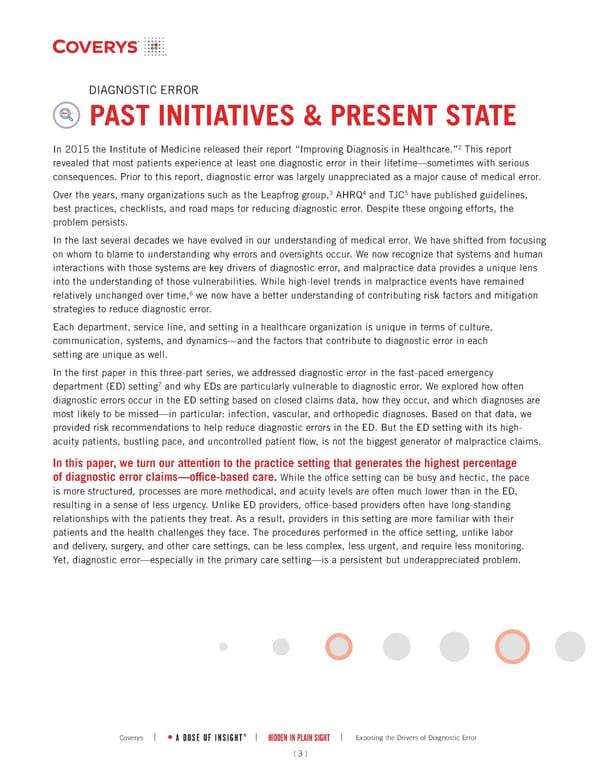In 2015 the Institute of Medicine released their report “Improving Diagnosis in Healthcare.”2 This report revealed that most patients experience at least one diagnostic error in their lifetime—sometimes with serious consequences. Prior to this report, diagnostic error was largely unappreciated as a major cause of medical error. Over the years, many organizations such as the Leapfrog group,3 AHRQ4 and TJC5 have published guidelines, best practices, checklists, and road maps for reducing diagnostic error. Despite these ongoing efforts, the problem persists. In the last several decades we have evolved in our understanding of medical error. We have shifted from focusing on whom to blame to understanding why errors and oversights occur. We now recognize that systems and human interactions with those systems are key drivers of diagnostic error, and malpractice data provides a unique lens into the understanding of those vulnerabilities. While high-level trends in malpractice events have remained relatively unchanged over time,6 we now have a better understanding of contributing risk factors and mitigation strategies to reduce diagnostic error. Each department, service line, and setting in a healthcare organization is unique in terms of culture, communication, systems, and dynamics—and the factors that contribute to diagnostic error in each setting are unique as well. In the first paper in this three-part series, we addressed diagnostic error in the fast-paced emergency department (ED) setting7 and why EDs are particularly vulnerable to diagnostic error. We explored how often diagnostic errors occur in the ED setting based on closed claims data, how they occur, and which diagnoses are most likely to be missed—in particular: infection, vascular, and orthopedic diagnoses. Based on that data, we provided risk recommendations to help reduce diagnostic errors in the ED. But the ED setting with its high- acuity patients, bustling pace, and uncontrolled patient flow, is not the biggest generator of malpractice claims. In this paper, we turn our attention to the practice setting that generates the highest percentage of diagnostic error claims—office-based care. While the office setting can be busy and hectic, the pace is more structured, processes are more methodical, and acuity levels are often much lower than in the ED, resulting in a sense of less urgency. Unlike ED providers, office-based providers often have long-standing relationships with the patients they treat. As a result, providers in this setting are more familiar with their patients and the health challenges they face. The procedures performed in the office setting, unlike labor and delivery, surgery, and other care settings, can be less complex, less urgent, and require less monitoring. Yet, diagnostic error—especially in the primary care setting—is a persistent but underappreciated problem. DIAGNOSTIC ERROR PAST INITIATIVES & PRESENT STATE ( 3 ) | HIDDEN IN PLAIN SIGHT | Exposing the Drivers of Diagnostic Error A DOSE OF INSIGHT ® Coverys |
 White Paper - Drivers of Diagnostic Error: Office-Based Practice | Coverys Page 3 Page 5
White Paper - Drivers of Diagnostic Error: Office-Based Practice | Coverys Page 3 Page 5